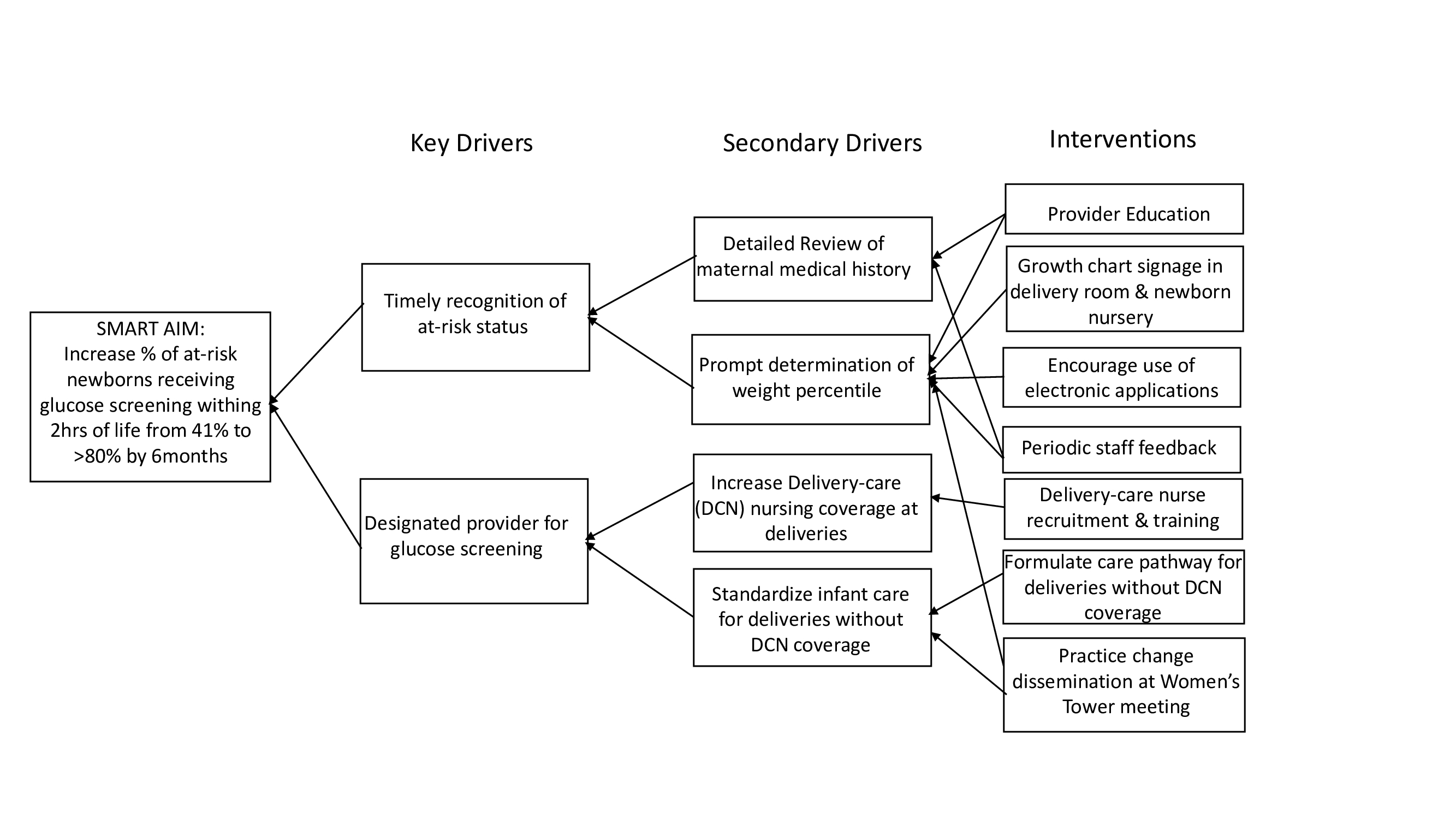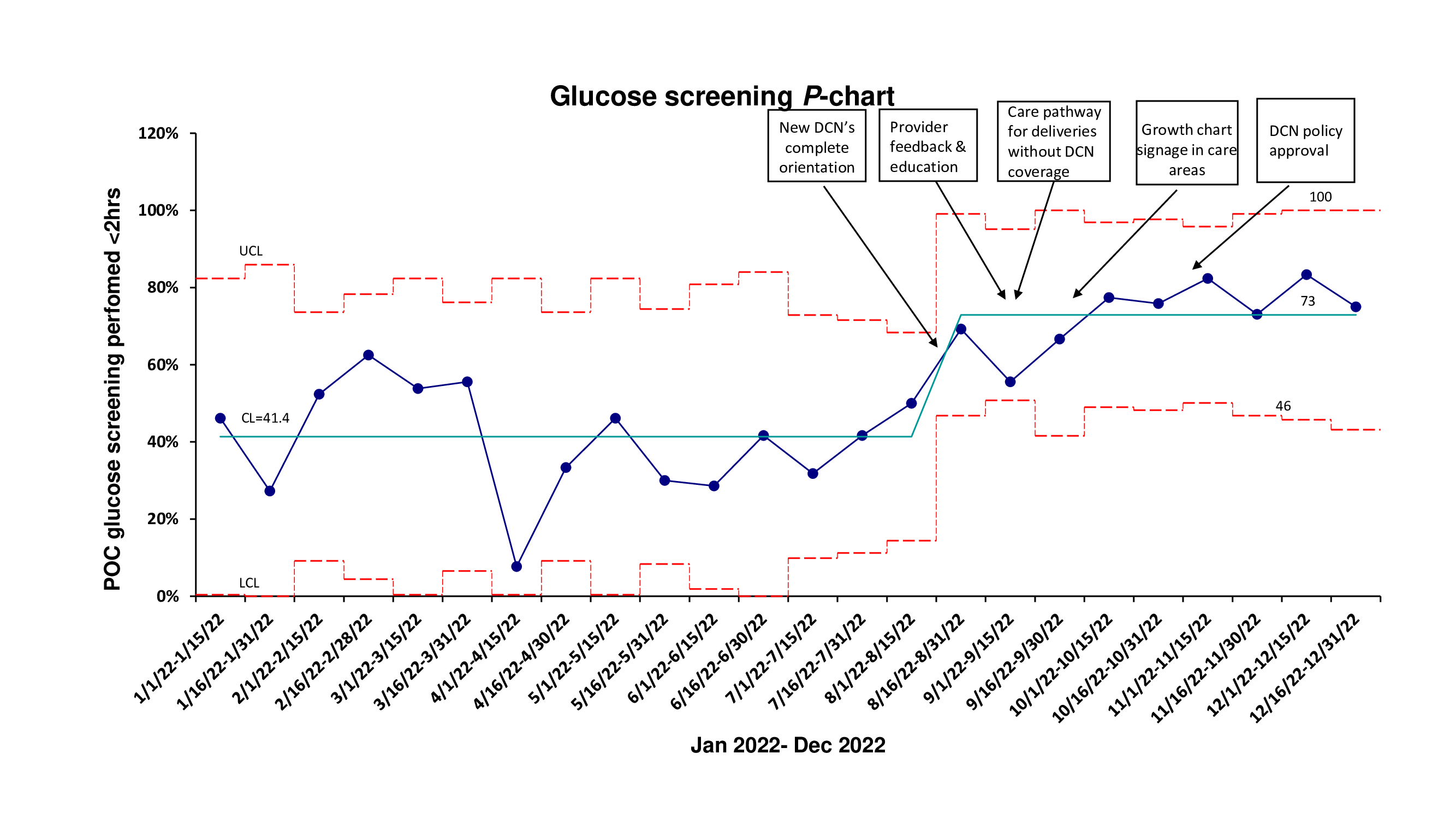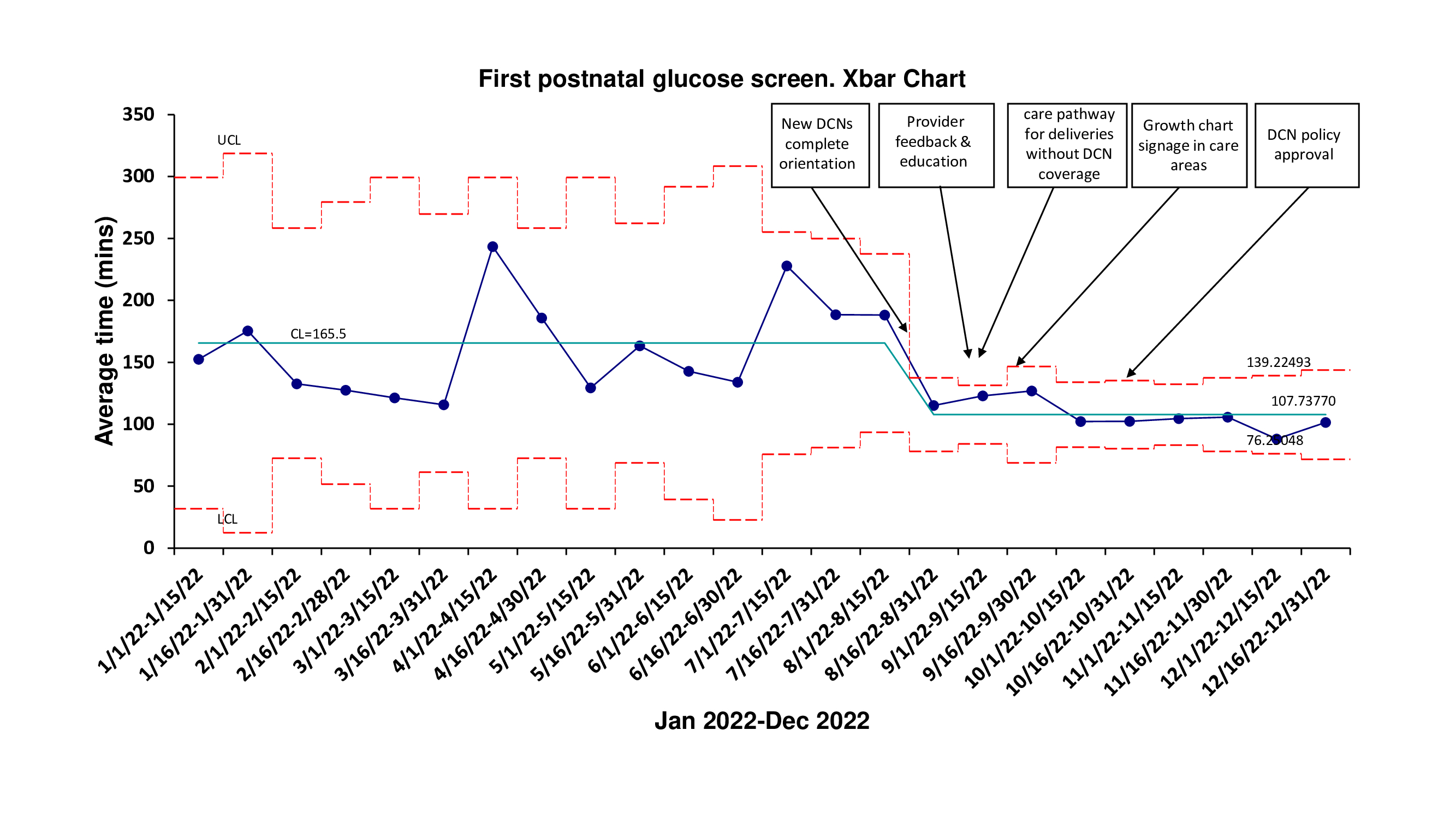Neonatal Quality Improvement
Neonatal Quality Improvement 1
653 - Improving early postnatal care of newborns at risk for hypoglycemia.
Publication Number: 653.138
- KI
Kelechi Ikeri, MD
Adjunct Assistant Professor
University of South Alabama Children's and Women's Hospital
Mobile, Alabama, United States
Presenting Author(s)
Background:
Neonatal hypoglycemia can result in brain injury therefore, at-risk newborns require careful clinical surveillance which should be initiated soon after birth. Of the newborn nursery admissions in our center, the percentage of asymptomatic at-risk newborns receiving point-of-care glucose screenings performed by 2hours of age (best practice guidelines) was only 41 %.
Objective:
To increase from 41% to >80%, the rates of at-risk well-appearing late preterm and term newborns receiving glucose screenings in the first 2hours of life by February 2023.
Design/Methods:
This initiative was conducted in the Labor and Delivery unit of a regional academic hospital (2500 deliveries per year). Baseline data from January 2022-July 2022 were reviewed. Our interdisciplinary quality improvement team investigated barriers to timely identification of at-risk status and factors contributing to screening delays. Key drivers were identified (Fig 1). We implemented the following measures starting August 2022: clinical care policy formulation with delivery care nursing (DCN) role clarification, DCN recruitment and education, growth chart signage in the delivery room and newborn nursery and timely staff feedback. Plan-Do-Study-Act (PDSA) model for improvement was used. Outcome measures were the percentage of at-risk newborns screened within 2hrs of life (depicted on a P-chart. Fig 2) and the average time to first postnatal glucose screening (displayed on an X-bar S chart. Fig 3). Process measures proven to improve glycemic control such as skin-to-skin (STS) care and breastfeeding initiation were analyzed pre- and post-intervention. Balancing measure was STS care complications such as falls and suffocation.
Results:
Baseline and preliminary improvement data were collected for a total of 2020 newborns from January to December 2022 of which 25% were at risk for hypoglycemia. Among these at-risk newborns, the percentage of newborns screened within 2hrs of life increased from 41% to 73% while the mean time to first postnatal glucose screening decreased from 166mins to 108mins (35% reduction). Special cause variation was observed in both measures. STS rates increased from 58 % to 67 %, p< 0.05, and breastfeeding initiation rates increased from 37 % to 43 %, p< 0.05. There were no adverse events reported during skin-to-skin care.
Conclusion(s):
Expansion of the DCN program coupled with continued provider education and feedback improved hypoglycemia surveillance, STS and breastfeeding initiation rates without increasing related adverse events. Efforts towards further improvements continue.



